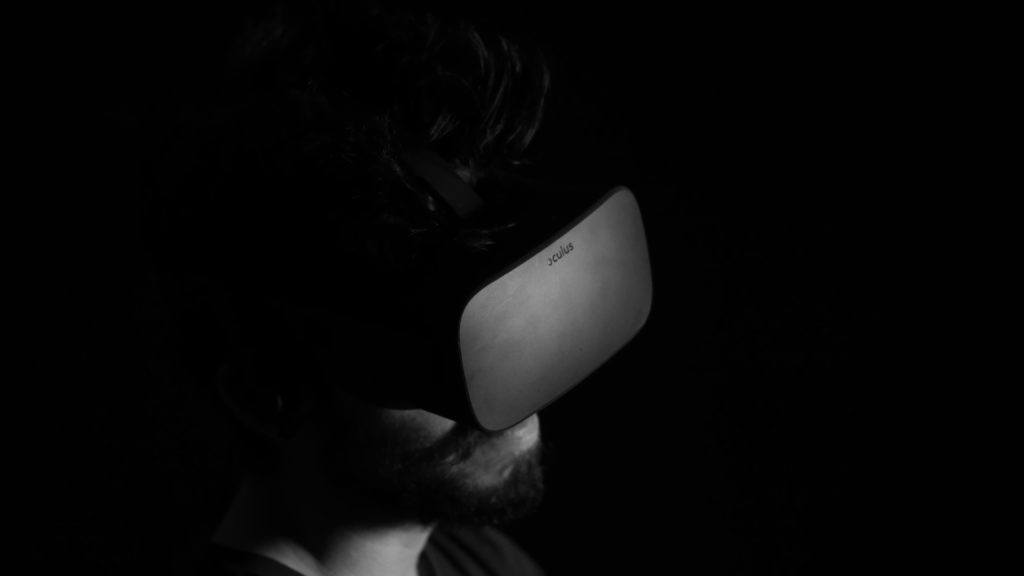Article
Meet the Key Players in the VR/AR Game

It doesn’t seem like that long ago that we were hearing rumors of Google’s latest prototype, Google Glass, a pair of glasses that allowed the wearer to see digital information and programs overlaid on top of their natural surroundings.
While Google Glass was an early-stage prototype that didn’t take off as expected, it paved the way for other companies to improve upon Google Glass’ mishaps.
We’ve seen the immense popularity of augmented and virtual reality in games like Pokémon GO that hit worldwide adoption in record time, developer toolkits like Apple’s ARKit that was recently announced, and office AR headsets like Microsoft HoloLens that continue to be developed and expanded.
What started out as the pet project of a few large tech companies has quickly turned into a serious focus on creating the next iteration of technology. In 2014, Facebook purchased Oculus for 2B, and the company now has hundreds of employees dedicated to the development of VR products and software. HTC partnered with Valve and together created the HTC Vive, a high-end VR system which offers one of the most advanced room-space tracking systems to-date. Google, Apple, Amazon, Microsoft, Sony, Samsung, and Intel all have internal groups devoted to AR and VR work. In one of the largest fundraising efforts for an AR/VR startup, Magic Leap has raised 2.4B to date, with 542 million of that coming from Google. It’s expected that the global AR and VR market size could reach $209 billion by 2022.

Who’s leading the charge in the development of VR & AR? These are some of the biggest players we see today:
1. Facebook/Oculus (Rift, Go, and Quest)
In 2014, Facebook acquired Oculus, a VR company that focuses on making headsets and VR software for developers. Oculus created the popular Oculus Rift and Oculus Go headsets and the upcoming Oculus Quest, the first all-in-one VR gaming system. Oculus was one of the first VR companies to gain significant public support, and since then they have worked to streamline their headsets while also producing games, instructional, and entertainment software for the device. While the primary goal of the company is to make products centered around the gaming industry, they are also working on areas like 3D video and photography and are rumored to be working on AR devices as well.
2. HTC and Valve Corporation (HTC Vive Pro)
The HTC Vive is a collaborative virtual reality system made by Valve (the creators of the Steam digital game store) and HTC (a high-end consumer electronics company). Together, they offer the standard Vive headset alongside an enhanced Vive Pro version. Each is relatively affordable compared to competing products, with the focus being on the entertainment and gaming industries. Both headsets support motion tracking via the highly accurate Lighthouse tracking system, which offers one of the best room-scale VR experiences. HTC and Valve continue to work together, with the goal of bringing VR to mainstream audiences as quickly as possible, while continuing to produce high-quality yet affordable products.
3. Google (Daydream and Cardboard)
Daydream is a lightweight VR headset that is compatible with many mobile devices. Aside from enabling developers to create immersive VR experiences through YouTube videos and mobile apps, the VR headset has enabled many humanistic and educational projects, including an empathetic look at female leadership in The Female Planet, an augmented reality CPR trainer, and Ocean to Plate, an immersive documentary about the fishing industry supply chain.
Cardboard is Google’s virtual reality headset made out of— you guessed it— cardboard. By keeping the product simple and affordable, Google has been able to reach a large number of individuals with VR. Along with giving consumers an affordable VR headset, they are using it to promote initiatives like Google Expeditions (a way for students to take field trips without leaving the classroom) and Google Jump (a camera built for recording in 3D).
4. Apple (ARKit)
It’s been rumored that Apple is working on their own AR glasses. But prior to releasing their own product, in 2017, Apple released ARKit as a feature included in iOS 11. ARKit is a development tool that makes creating AR apps for iOS devices simple. Because AR is now built into the operating system, apps that use ARKit are more stable and powerful than before. Aside from popular games like Pokémon GO, developers have used ARKit to create apps that let users measure distance in real time and see how furniture will look in their homes before purchasing it.
5. Microsoft (HoloLens)
HoloLens is a mixed reality project by Microsoft that is geared towards enterprise use. While most AR/VR headsets require a connection to a computer, controllers, and more, the HoloLens is an all-in-one product, so the user only needs the headset. It runs on Windows 10 and uses the Mixed Reality features built into the operating system. The unit currently costs $5,000 due to how technologically dense it is, so, for now, Microsoft is offering to rent it to businesses until it becomes more affordable.
6. Magic Leap (Magic Leap One)
Magic Leap is a startup company that makes high-quality MR headsets. What sets them apart from similar products is their intense focus on immersion. The device uses light fields to create AR projections directly on the wearer’s eyes, making digital artifacts extremely realistic and believable. Each Magic Leap One headset comes with a controller and a “Lightpack” that fits in your pocket, so the system is completely wearable. While most of their projects are still in development, they have shown a lot of promise and received widespread support from the industry.
7. Samsung (Gear VR)
Samsung’s Gear VR, first released in 2015, is a virtual reality headset that uses a Samsung phone as the screen. Samsung first started working on the concept of a mounted headset back in 2005 and partnered with Oculus in 2014 to bring the device to life. Because it uses the wearer’s phone for a screen, it’s available at a much lower cost than its competitors. Users can download apps and games from Oculus Home (Oculus’ app store), mount their phone onto the headset, and use the device with peripherals like headphones and controllers.
8. Huawei
Huawei announced that they plan to release their own version of AR glasses in one to two years. Despite the previous failure of Google to create a pair of augmented reality glasses that saw mass adoption, Huawei believes the market for AR technology is still in its infancy.
9. Intel
Intel also began developing a pair of smart glasses but decided to scrap the project, saying the market didn’t support further investment. The company has instead invested in developing their VR-ready PCs, processors that support the demands of VR technology, and the Intel VR True headset which focuses on bringing sporting events to life.
10. PlayStation (PlayStation VR)
Gaming has been a primary focus of early VR developers, and PlayStation is at the forefront. Their PlayStation VR system already has over 200 games that work with the PS4 system.
11. Mira (Mira Prism)
The Mira Prism is a unique AR tool that enables you to turn any smartphone into an AR device. The prism is a plastic shell to which you can attach your phone. Images from a compatible app on your phone are projected onto the prism and reflected back into your field of vision, as you look around your environment.
12. Meta (Meta 2 AR Development Kit)
Meta aims to create a comprehensive AR development kit with their Meta 2 AR headset and the accompanying Meta Workspace™ software. The company hopes to make creativity and design more immersive, as they illustrate in their concept video that demonstrates how a Nike sneaker could be designed through their AR headset.
While these key players have done a lot to push VR & AR technology forward, there are many more companies bringing important projects to life. One thing we’re sure of is that this technology is growing quickly, and it’s bringing with it projects that will reshape the way we work, entertain ourselves, and perceive the world around us.









